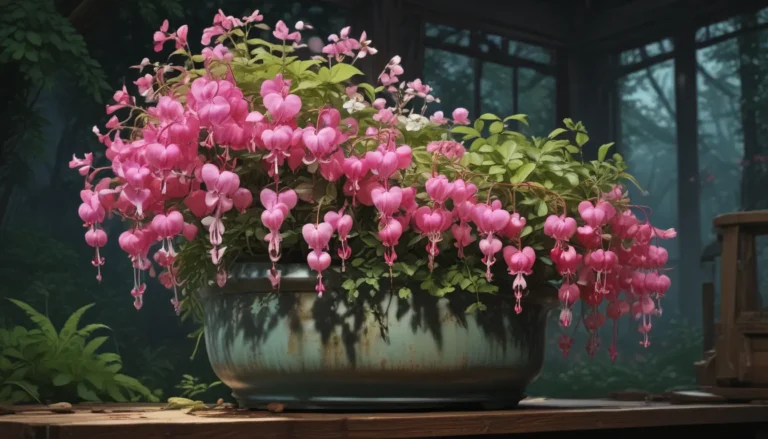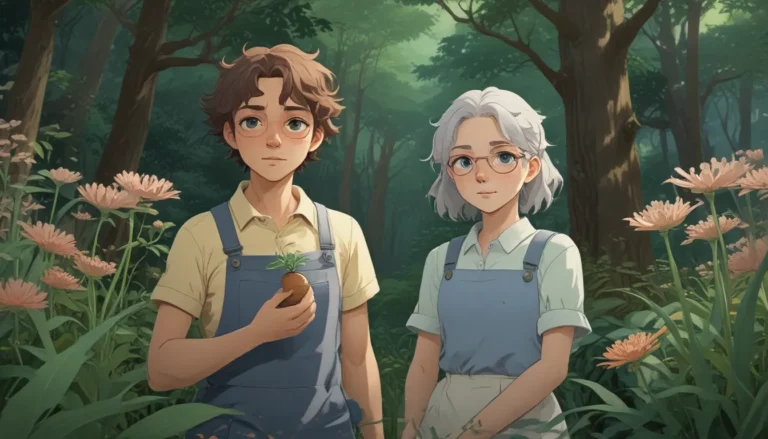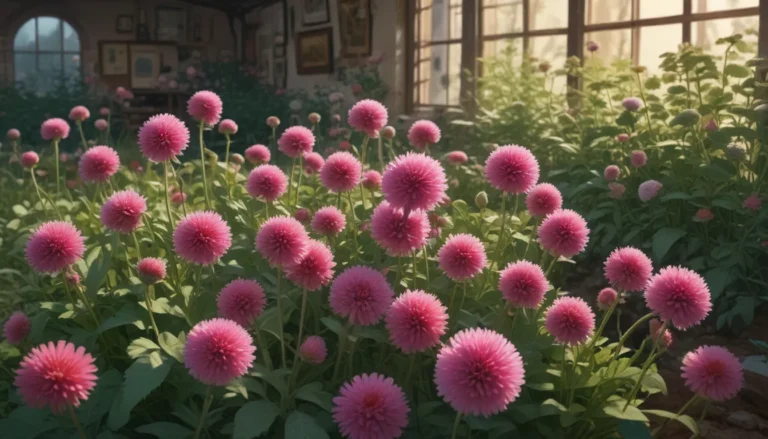The Ultimate Guide to Growing and Caring for Hyacinth Bean Vines

If you’re looking for a plant that can do it all, look no further than the versatile hyacinth bean vine. Known for its beauty, edible parts, and its appeal to butterflies, this plant is a must-have in any garden. Best of all, it requires minimal maintenance and thrives on just average soil.
In this comprehensive guide, we will explore everything you need to know about growing and caring for hyacinth bean vines. From its cultivation and history to tips on managing pests and diseases, you’ll learn how to make the most of this stunning plant in your own backyard.
What Is Hyacinth Bean Vine?
The hyacinth bean vine, scientifically known as Lablab purpureus, is a fast-growing member of the legume family. With violet-tinged green leaves and clusters of flowers in shades of purple, white, rose, or red, this plant is a feast for the eyes. The purple pods that develop after flowering add to the plant’s visual appeal, creating a striking contrast with the foliage.
Are Hyacinth Beans Poisonous?
While the young shoots and flowers of hyacinth beans are edible and make a great addition to salads or soups, caution must be taken with the mature beans. These beans contain high levels of cyanogenic glucosides, making them toxic if consumed raw. To enjoy the mature beans safely, they must be soaked and cooked in multiple changes of water to reduce their toxicity.
For those looking to enjoy the edible parts of hyacinth beans, sticking to the young shoots, leaves, and flowers is the safest option.
Cultivation and History
Originating in tropical regions of Africa and dating back to ancient India, hyacinth beans have a rich history as both an ornamental and food crop. While they are still grown in these regions for culinary purposes, in modern times, they are most popular in the Southern United States for their ornamental value and shade-providing qualities.
With ties to the historic home of Thomas Jefferson and its continued cultivation at Monticello, hyacinth beans have a longstanding presence in American gardening. Whether grown for their beauty or their potential as a food crop, these plants have much to offer.
How to Grow Hyacinth Bean Vines
Growing hyacinth bean vines is a rewarding experience, thanks to their fast growth and stunning visual impact. These plants thrive in full sun with ample water and well-draining soil. While they can be grown as perennials in some regions, most gardeners treat them as annuals and enjoy their self-seeding nature.
To grow hyacinth bean vines successfully, plant the seeds in well-draining soil after the last frost date, ensuring they have a sturdy support structure to climb on. As the vines grow, guide them towards the support to encourage upward growth. Pruning may be necessary to maintain the plant’s shape and encourage additional blooming.
Managing Pests and Disease
While hyacinth bean vines are generally resilient to pests and diseases, certain issues may arise. Japanese beetles and longtail skipper butterflies are occasional visitors that may eat the leaves, but healthy plants can usually withstand their presence.
Common diseases such as blight, wilt, and rust can affect hyacinth bean vines if proper care is not taken. To prevent these issues, ensure adequate air circulation around the plants and avoid watering from above. If disease does occur, treatments such as fungicides can help control the symptoms.
Growing Tips
- Soak seeds in warm water to speed up germination.
- Provide sturdy support structures for the vines to climb.
- Guide young plants to climb by tying twine to supports.
- Save seeds from mature plants for future growing seasons.
Where to Find Hyacinth Bean Vine Seeds
Hyacinth bean vine seeds are readily available from seed houses and online retailers. Specific cultivars such as ‘Ruby Moon’ and ‘Silver Moon’ offer unique flower and pod colors for added variety in your garden. Additionally, seeds can be saved from mature plants at the end of the growing season for future planting.
Harvesting Tips and Best Uses
Hyacinth bean vines offer edible shoots, leaves, tubers, and flowers throughout the growing season. From salads to soups, there are many ways to incorporate these edible parts into your meals. The pods can also be used in floral arrangements before they mature and become too dry.
For those interested in overwintering the roots for consumption in the following year, careful preparation and protection with straw mulch are essential. The edible parts of hyacinth bean vines offer a unique addition to the home garden, but caution should be taken with mature beans and pods due to their toxicity when raw.
Quick Reference Growing Guide
- Plant Type: Tender perennial or annual flowering vine
- Flower/Foliage Color: Pink, purple, white; green
- Native to: Sub-Saharan Africa
- Hardiness (USDA Zone): 9-11, varies depending on cultivar
- Maintenance: Low
- Tolerance: Drought, humid heat
- Season: Summer/fall bloom
- Water Needs: Moderate
- Exposure: Full sun
- Soil Type: Average, loamy
- Time to Maturity: 90 days
- Spacing: 6 inches
- Height: 8-10 feet, up to 25 feet with support
- Spread: 3-6 feet
- Growth Rate: Fast
- Attracts: Hummingbirds, butterflies, other pollinators
- Common Pests: Longtail skipper caterpillars, Japanese beetles
- Common Disease: Fusarium wilt, common blight, rust
Embrace the Power of Purple!
The hyacinth bean vine is a remarkable plant that offers beauty, edible parts, and wildlife attraction all in one package. By incorporating this versatile vine into your garden, you can create a vibrant and dynamic outdoor space that will delight both you and your local pollinators.
Whether you’re a seasoned gardener or a beginner looking for low-maintenance options, the hyacinth bean vine is a fantastic choice. With its stunning flowers, lush foliage, and edible components, this plant brings a touch of magic to any garden setting.
So, are you ready to tap into the purple power of the hyacinth bean vine? With the knowledge and tips provided in this guide, you’ll be well-equipped to grow and care for these unique plants in your own backyard. Happy gardening!





